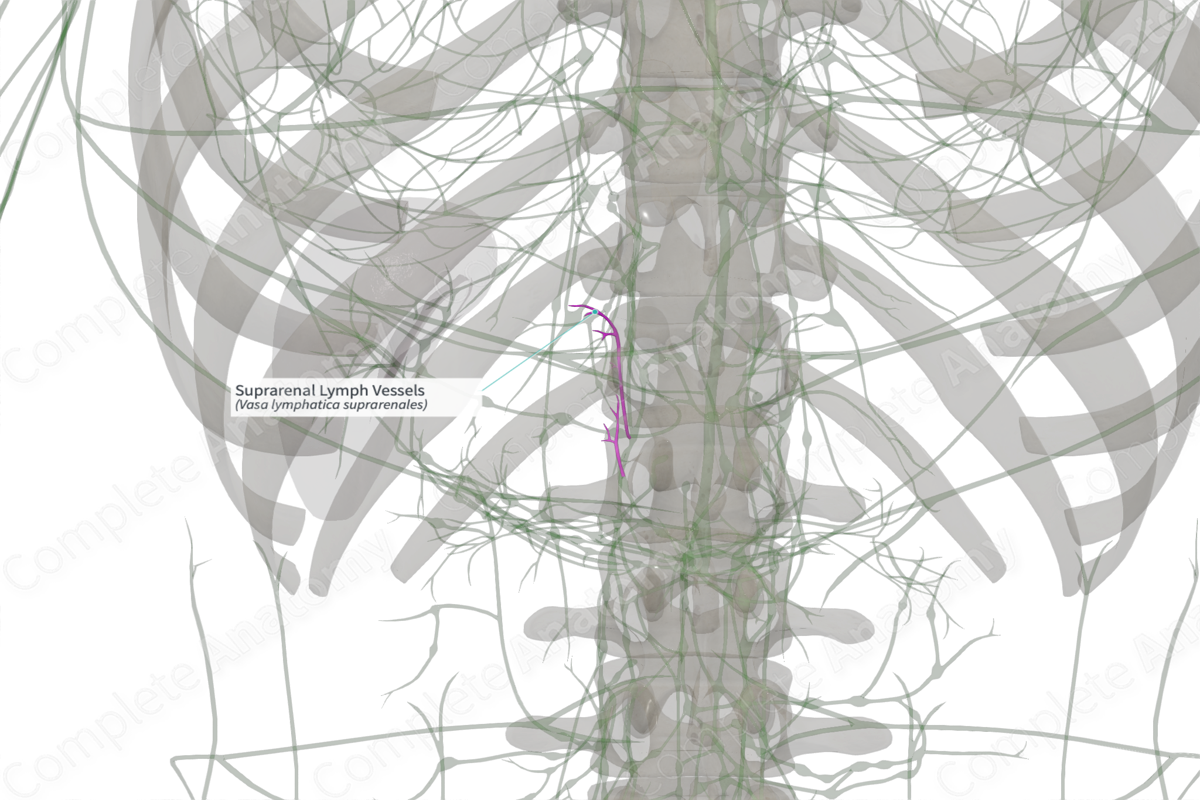
Quick Facts
Location: Abdomen.
Drainage: Suprarenal gland.
Direction of Flow: Lumbar nodes > cisterna chyli > thoracic duct.
Related parts of the anatomy
Description:
Description: (Location & Drainage)
The suprarenal gland (or adrenal gland) is drained by lymphatic vessels that originate in the medulla, cortex, and fibrous capsule. Vessels that originate in the capsule and cortex accompany the inferior phrenic and meddle suprarenal arteries, while lymph vessels that originate in the medulla accompany the suprarenal vein. These vessels terminate in either the right or left lumbar nodes (Földi et al., 2012).
Some suprarenal lymph vessels may ascend into the thoracic cavity, accompanying the splanchnic nerves and terminate in the intercostal or prevertebral nodes of the posterior mediastinum. The right suprarenal lymph vessels may also join the with lymph vessels in the porta hepatis (Földi et al., 2012).
References
Földi, M., Földi, E., Strößenreuther, R. and Kubik, S. (2012) Földi's Textbook of Lymphology: for Physicians and Lymphedema Therapists. Elsevier Health Sciences.
Description:
Description: (Location & Drainage)
The suprarenal gland (or adrenal gland) is drained by lymphatic vessels that originate in the medulla, cortex, and fibrous capsule. Vessels that originate in the capsule and cortex accompany the inferior phrenic and meddle suprarenal arteries, while lymph vessels that originate in the medulla accompany the suprarenal vein. These vessels terminate in either the right or left lumbar nodes (Földi et al., 2012).
Some suprarenal lymph vessels may ascend into the thoracic cavity, accompanying the splanchnic nerves and terminate in the intercostal or prevertebral nodes of the posterior mediastinum. The right suprarenal lymph vessels may also join the with lymph vessels in the porta hepatis (Földi et al., 2012).




